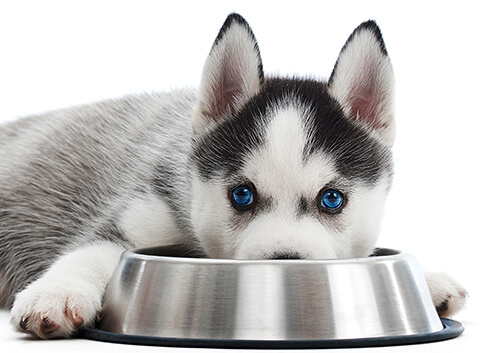Every pet owner knows the feeling of wandering down the food aisle in the pet store and feeling overwhelmed by the hundreds of options. Dry food or wet food? This brand, or that brand? Which ingredients should you look for? Which ingredients should you avoid?
You want to choose a pet food that will be healthy and nutritious for your furry family member, but you also want something they’ll enjoy. Reading pet food labels and choosing the right food for your pet is certainly one of the trickiest challenges for pet owners!
Reading Pet Food Labels: The Basics
Step one is to make sure the Association of American Feed Control Officials (AAFCO) approves the food as a complete and balanced nutritional diet. AAFCO is an organization that sets the nutritional standards for pet foods sold in the US.
Once you know the pet food is approved by the AAFCO, you can start thinking about whether or not it may be the right food for your pet. If your pet is still growing, make sure to find a food that is labeled for either all life stages, or specifically for puppies or kittens.
Puppy or kitten food contains much higher levels of certain nutrients than foods for adult maintenance. For dogs, you should also look for size-specific foods. A fast-growing, large breed dog needs different nutrients than a small dog.

Remember the Difference Between Ingredients and Nutrients
Nutrients are food components that support life and are metabolically useful, while ingredients are the vehicles that provide nutrients. For example, chicken is an ingredient that provides nutrients such as protein, fatty acids, and vitamins.
Also remember that ingredients are listed in descending order by weight, which is why meat is usually listed first. The high water content in meat (chicken, beef, lamb) makes these ingredients weigh more than grains, meals, and vitamins.
What Are the Best and Worst Pet Food Ingredients?
Science tells us that dogs and cats are carnivores by nature, and would consume protein-rich foods such as muscle and organ tissue in the wild. Unfortunately, the vast majority of modern pet foods are grain-based rather than meat-based.
That’s not to say that all grains are bad! Peas, potatoes, beans, oats, and barley can be healthful sources of energy in limited amounts. Likewise, vegetables can provide fiber, minerals and micronutrients.
On the other hand, steer clear of ingredients like ground yellow corn and corn meal. These are cheap filler grains with limited nutritional values. You should also avoid pet foods with artificial coloring and flavoring, which provide no value except making cheap foods look and taste better.
The most nutritious pet foods will list proteins like chicken, beef, eggs and fish as the first ingredients. Note that animal by-products are NOT a quality source of protein; this may include feet, beaks and undeveloped eggs.
How to Use Dry Matter Basis to Compare Pet Foods
One way to ensure that your pet is getting the right nutrients from their food is by checking the Guaranteed Analysis. This is a panel that shows the percentage of protein, fat, fiber and moisture in your pet’s food. These numbers are regulated and guaranteed.
Keep in mind that wet and dry food percentages will be different, so comparing them can seem tricky. However, you can convert wet food to dry matter in order to compare foods.
Let’s say you’re comparing two pet foods: one is a wet canned food that contains 10% protein and the other is a dry food that contains 25% protein. At first glance, it seems that the dry kibble is a much more nutritious choice…but what does the Dry Matter Basis tell us?
In this scenario, the wet food contains 75% moisture and the dry food contains 10% moisture. So we need to remove ALL moisture from both foods in order to accurately compare them.
To find the dry matter content of each food, subtract the moisture percentage (75% for the wet food and 10% for the dry food) from 100%. This gives us a dry matter percentage of 25% and 90%, respectively.
Dry Matter Protein Content = (Protein Percentage / Dry Matter Percentage) x 100
For these two foods, here’s the dry matter protein content:
As you can see, the wet canned food actually has a higher protein content than the dry food! This formula also applies to any other nutrient, not just protein. So if your vet has recommended a low fat or high fiber diet, you can use this formula to compare pet foods.
If you’re still unsure about how to read pet food labels and whether you’re feeding your pet the right food, ask your veterinarian. They can recommend high-quality, nutritious pet foods that they feed their own pets!